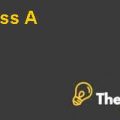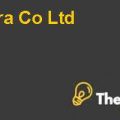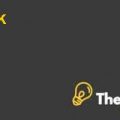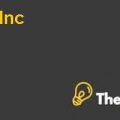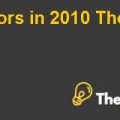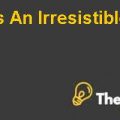
1. SWOT ANALYSIS
i. EXTERNAL ANALYSIS (Strengths and Weaknesses)
- STRENGTHS
- Over 8 million inhabitants in the year 2005.
- New York City is considered as the largest and most densely populated city in the United States of America.
- Comprises of five boroughs which include: Brooklyn, the Bronx, Manhattan, Queens and State Island each of which is also considered as a major city in their own prospect.
- New York’s metropolitan area is the World’s largest conglomeration with a 22 million population.
- Have large population of immigrants and is known as the “Big Apple”.
- New York City is home to most of the fortune 500 hundred companies.
- Posses the boastful collection of museums, galleries, international embassies, corporations and exchanges.
- New York is an attraction for almost 40 million customers per annum (37.4 million domestic and 6.7 million foreign).
- Representative of the $24 billion industry generates $5 billion in savings, which is used to support 329,000 jobs.
- International visitor market generates 40% of the total visitor spending.
- Maximum hotel occupancy with 83% occupancy in Manhattan in the year 2004.
- Best positioning that is hard to compete.
- Seventh largest economy in the world, with 40% foreign born citizens.
- Personalized assistance in physically navigating the city.
- In 2004, New York City was recognized as the 13th most powerful brand out of the 2400 analyzed.
- Dominated the American cities in brand strength and stature.
- WEAKNESSES
- Perceived as a city with high crime rate.
- The cost of doing business at New York City is perceived to be high.
- The City Government had a complex and bureaucratic structure.
- Bounded by the policies and procedures for the usage of City’s assets.
- Crime kept visitors away and allowed limited visitor movement within the city.
- Sites that were to be used by the contractors e.g. Snapple were already lacking electrical outlets and had vending contracts existent.
- Inability to physically deliver the number of locations as quickly as it could otherwise.
- Hardly considered to be the focal point for country music.
- New York City didn’t even have its own music station.
ii. INTERNAL ANALYSIS (Opportunities and Threats)
- OPPORTUNITIES
- City’s size and pre-eminent positioning provided New York City with the assets that could be used in partnerships with other merchants to meet New York City Marketing strategic goals and help New York City to solve its reputation related issues.
- Driving tourism and growing the number of jobs may help New York City to generate billion dollars.
- Within New York City’s existing infrastructure, the investment in marketing budget may help to generate more direct investor spending.
- A change in attractions might draw repeated visitors.
- EDC and New York City Marketing can be used as complementary organizations.
- A point of differentiation or a unique selling point may help New York City to retain its competitive landscape.
- Joining hands with other agencies to promote New York City’s uniqueness would help to increase government efficiency and may generate revenues pertinent for crucial services.
- Partnership with Snapple to position agreement as a marketing partnership with a component to vend rather vis-à-vis.
- CMA awards might help New York City revamp its image of isolation from music.
- Advertising though representing only 2.4 % of the total of U.S.A advertising but growing at a rate of 5.5% annually.
- Outdoor advertisers perceived New York City a key market with dense population and good income levels.
- Vast range of street furniture available for marketing.
- A minute or two featuring of the New York City’s tourism message in the promotion of the new movies.
- Tens of millions of the dollars were generated through the New York City related Merchandise but New York City itself saw a very small part of that revenue.
- Opportunities to market or promote in parks, sanitation, taxis etc.
- THREATS
- The City Comptroller joined hands with the competitors of Snapple in the beverage industry to warn them to form a “back room” deal.
- Lawsuit to prohibit the implementation of the partnership set forth by the Snapple.
- Necessity to report to the Comptroller about each and every marketing agreement, which will delay the implementation further.
- Inability to make a distinction between the real property and the intellectual property.
- Loads of pedestrian and vehicle traffic restricts the full use of the street furniture..................................
This is just a sample partial case solution. Please place the order on the website to order your own originally done case solution.

